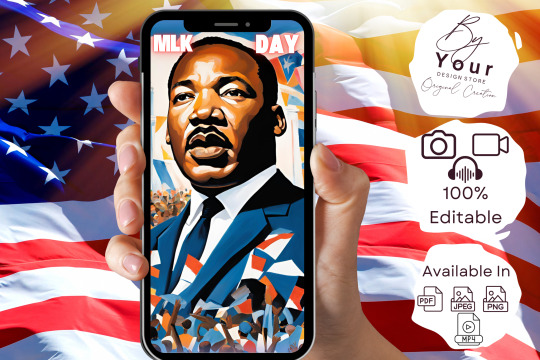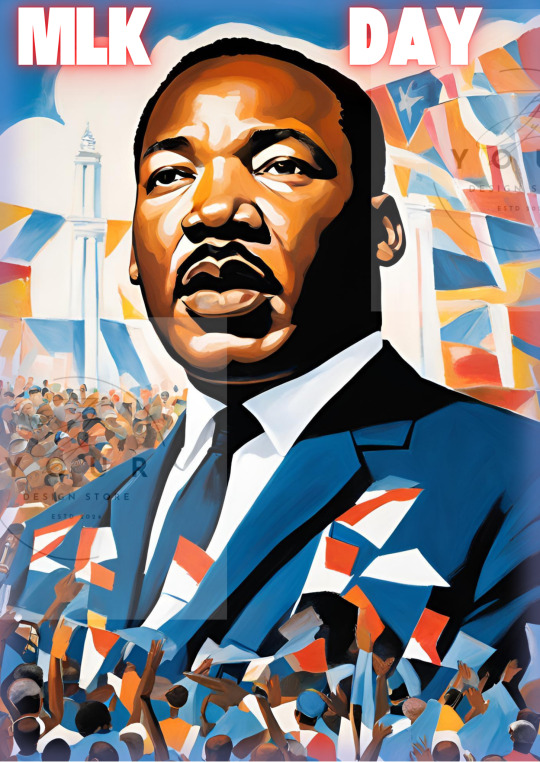#black lives are important
Explore tagged Tumblr posts
Text

#tiktok#daniel penny#jordan neely#nyc#new york#new york city#homelessness#houseless#houselessness#blm#blm movement#black lives matter#black lives fucking matter#black lives are important#black lives movement#black lives are beautiful#tw murder
318 notes
·
View notes
Text
I’m so tired of black and brown bodies being slain for the world to see. our brothers and sisters should still be here today and I’m outraged that they aren’t. to be killed over boiling water to be met with that brutality is sickening. to follow every order and still be shot is premeditated. the lack of humanity to refer to her as a “crazy bitch” speaks volumes. acab!
#sonya massey#blacklivesmatter#black lives fucking matter#black lives matter#black lives are important#black lives movement
572 notes
·
View notes
Text

Republicans like to pretend that Slavery and Segregation were a long time ago. But if they are wrong. The generations that were dealing with segregation are still alive today.
#segregation#black lives fucking matter#black lives are important#black liberation#black lives matter#history#american history#american politics#fight project 2025#fuck conservatives#fuck republicans#project 2025#survive out of spite#counter culture#fuck project 2025#fuck the police#fuck trump#leftism#black history
148 notes
·
View notes
Text
May the Governor of Missouri never know peace. May his every waking moment be that of pain and suffering, may he be ridiculed by society
Ina lillahi waina illahi raji3oon
May Marcellus Khaliifah Williams find peace in the afterlife and may Eric Greiten and the attorney general and the Supreme Court get exactly what they deserve
#marcellus#marcellus williams#missouri#usa politics#politics#us politics#death penalty#islampost#black lives movement#black lives are important#black lives matter#muslims for black lives#usa news#usa#news update#god what a world we live in#lahawla wala quuata illah billah#Wallahi this world is nothing#and Wallahi Missouri will get its due in due time
229 notes
·
View notes
Text

Happy black history month ya'll!!!
#black history month#black lives still matter#black lives are important#black lives fucking matter#black lives have always mattered#black lives matter#black liberation#black community#poc artist#blm#my art 2024#black power#blm is not a terrorism group#black is beautiful#black is divine#artists on tumblr#black artists#artists of color#black artists on tumblr#fluffytimearts#my artwork#my art#yes yes I know another artstyle change fuck off--#signal boost#chibi art#chibi style#black history month 2024
579 notes
·
View notes
Text

#donald trump#black lives matter#blm movement#trump 2024#democrats#vote democrat#vote blue#joe biden#vote biden#biden administration#blm mustang#blmpff#black lives fucking matter#black lives are important#black tumblr#blacklivesmatter#meidastouch#democratic party#republicans#maga 2024#maga
82 notes
·
View notes
Text

On this day, 5 November 1843 an enslaved woman called Carlota Lucumi led a slave uprising in Matanzas, Cuba. Brandishing machetes, Lucumi and her co-conspirators summoned other enslaved people with a kettle drum, then killed the cane plantation enslavers before heading to neighbouring plantations and farms to free other enslaved people.
While Lucumi herself was soon executed, the rebellion lasted until the following year, when Spanish colonial authorities succeeded in violently repressing it.
The abolition of slavery in Cuba was eventually achieved in 1886.
•••
Un día como hoy, 5 de noviembre de 1843 una mujer esclavizada llamada Carlota Lucumí lideró una rebelión de esclavos en Matanzas, Cuba.
Llevando machetes, Lucumí y sus co-conspiradores hicieron un llamado a otros esclavos utilizando un timbal y luego mataron a los escalvizadores de la plantación de caña. Luego se dirigieron a plantaciones y granjas vecinas para liberar a otras personas esclavizadas.
Aunque Lucumí pronto fue ejecutada, la rebelión duró hasta el año siguiente, cuando las autoridades de las colonias Españolas lograron reprimirla de manera violenta.
Eventualmente, se logró la eliminación de la esclavitud en Cuba en 1886.
#blacklivesmatter#blacklivesalwaysmatter#blackhistory#history#blackhistorymonth#blackpeoplematter#black history is everybody's history#historyfacts#black history is world history#black history month#cuba#knowledgeispower#black power#knowyourhistory#historia#slavery#blackhistoryyear#rebel#black history matters#english#spanish#español#share#read#culture#blackownedandoperated#black history#blackbloggers#black lives are important#leadership
75 notes
·
View notes
Text





guilt is an inactive emotion
#supergirl cw#supergirl edit#supergirl cast#supergirl#supergirl series#azie tesfai#kelly olsen#black lives matter#black lives are important#black lives fucking matter#black lives are beautiful#black lives movement#blm movement#BLM#dc comics#dc tv#dc tv shows#dc tv universe
62 notes
·
View notes
Text


🌟 Celebrate Martin Luther King Jr. Day with this bold and inspiring digital card! ✊ Perfect for honoring Dr. King’s legacy of equality, justice, and hope. This digital and printable design is ideal for sharing with friends, framing, or using in events.
💌 WHAT YOU GET:
• A PDF with a Canva link to customize your card
• Edit it with Canva’s free account or download it as is
🔔 IMPORTANT DETAILS:
• THE WATERMARK WILL NOT BE IN THE DOWNLOAD
• After purchase, CHECK YOUR EMAIL for the PDF link
• Open the link to Canva, make edits if needed, and download your card
Spread Dr. King’s powerful message and commemorate this special day. 🌍 Download now to inspire and uplift!
#MLKDay #MartinLutherKingJr #EqualityForAll #DigitalCard #PrintableDesign #CanvaEditable #Inspiration #JusticeAndHope
#black love#happy martin luther king jr day#martin luther king quotes#martin luther king#martin luther king jr#martin luther king day#blm movement#black lives movement#black lives are beautiful#black lives are important#black history#black lives matter#black art#black literature#black panther#black tumblr#black women#black men#black entrepreneurship#black is beautiful#black girl magic#black girls of tumblr#black girl moodboard#blacklivesmatter#african american figures#african america history#african american#america#black woman magic#black womanhood
30 notes
·
View notes
Text





Heroes of Black History: Day 5...
#black lives movement#black lives are beautiful#black lives fucking matter#black lives are important#black lives matter#black history is american history#black history month#black women#black beauty#blacklivesmatter#black history#black history matters#black history is world history#nasa#nichelle nichols#star trek#star trek strange new worlds#nyota uhura#tos uhura#lieutenant uhura#aos uhura#uhura#black superheroes
25 notes
·
View notes
Text
hey you know what makes me afraid for the future? the fact that most people who become police officers from now on definitely saw all the bullshit that we tried to call out and put a stop to and they’ll still become a police officer. They’ll see the discrimination and the brutality and they’ll go ‘i’m fine with that’ and they’ll become a cop. There’s no way you go into this blind. We’re all on the internet and that’s made it impossible not to hear the rally cries. I want to believe many police officers who just wanted to serve the public and protect people. The job may be shit but I’d like to believe the people are good. Still, I can’t imagine anyone from this generation going into it for any of the right reasons. They heard us scream for justice and scream for our lives and they will be happy to ignore us.
#defundthepolice#black lives are important#black lives matter#black lives have always mattered#cops#police#gen z culture#defund the cops
563 notes
·
View notes
Text
#captain america brave new world#brave new world#sam wilson#steve rogers#captain america#captain america: brave new world#captain america: civil war#sambucky#james bucky barnes#bucky barnes#james bucky buchanan barnes#isiah bradley#joaquin torres#thaddeus ross#black superheroes#black supers#stucky#black is better#black excellence#black actors#black lives matter#black lives fucking matter#black lives are important#black lives are beautiful#don cheadle#james rhodes#iron patriot#disabled supers#jewish bucky barnes#Jewish supers
24 notes
·
View notes
Text

The face of evil ....
#wisconsin#milwaukee#prison#blm movement#blacklivesmatter#black lives matter#black lives are important#racisim#hateful#trump#donald trump#president trump#democrats#donald j. trump#fox news#dan bongino#elon musk#jack posobiec#glenn beck#tucker carlson#jesse watters#greg gutfeld#ufc news#joe rogan#ufc#dana white#kid rock#tom brady#usaid#trump administration
22 notes
·
View notes
Text
It's so crazy... 2020 feels like a complete fever dream... I thought and hoped and prayed that we would keep the BLM momentum going like it was that year... But we didn't .... People started to forget and speak on it less.
I posted and still post as much as I can ab Black lives on my Facebook... Ab other social justice issues. Sometimes it felt like I was just screaming into a void... I still feel betrayed at times, by the white girlies who just a few years ago were in the streets saying "if they start shooting stand behind me"
My life doesn't feel important to most ppl. They talk a big game ab caring and wanting things to change, but at the end of the day most ppl don't want the status quo to change. They just want to do enough to look like a good person.
If this post makes you angry, makes you feel some typa way then I URGE you to look inwards and figure out WHY it strikes such an uncomfortablity in you. Figure out what you could be doing more...
I know it's difficult to hear these words, I know looking inwards is hard and uncomfortable, I've been there, I STILL have a cop in my head that I need to kill. We ALL do!

#kill the cop in your head#black lives matter#black lives fucking matter#black lives are important#black lives#say their names#black solidarity
165 notes
·
View notes
Text
Kamala Harris promised to " bring Joy " back to America. She did and she did it by losing!!!
#black lives are important#donald trump#black lives matter#blm movement#vote democrat#trump 2024#democrats#vote blue#vote biden#joe biden#biden administration#kamala 2024#robert kennedy jr#kid rock#meidastouch#ivanka#gay men#gavin newsom
60 notes
·
View notes
Text

The Whitening of Brazil
Brazil has a long and painful history of slavery that impacted its racial composition. In 1888, the country became the last in the Western Hemisphere to abolish slavery. During the more than 300 years of slavery in the Americas, Brazil was the largest importer of enslaved Africans. According to a UN publication by Edward Telles, Brazil brought in seven times as many as the United States. This massive influx of enslaved Africans resulted in a predominantly Black and mixed-race population by the time of abolition.
From the 1930s until recent years, Brazil promoted the idea of being a “racial democracy.” This concept suggested that racism and racial discrimination were minimal or non-existent in Brazilian society, especially when compared to other multiracial societies like the United States or South Africa. The absence of explicit race-based laws or policies, such as segregation or apartheid, throughout the 20th century reinforced this belief.
However, this ideology masked underlying racial inequalities and discrimination that persisted in Brazilian society. In the late 19th and early 20th centuries, Brazilian officials actively encouraged European immigration while restricting Chinese and African immigrants. This policy was rooted in the scientific racism of the time, which viewed a non-white population as problematic for the country’s future development.
Blanqueamiento is a social, political, and economic practice used to "improve the race" towards a supposed ideal of whiteness.
Biologically, blanqueamiento could be achieved by marrying a lighter-skinned individual to produce lighter-skinned offspring.
•••
El Blanqueamiento de Brazil
Brazil tiene una historia de racismo larga y dolorosa, la cual ha impactado su composición racial. En 1888, el país fue el último país del hemisferio occidental en derogar la esclavitud. Durante más de trescientos años de esclavitud en las Americas, Brazil fue el importador más grande de africanos esclavizados. De acuerdo con una publicación realizada por las Naciones Unidas, escrita por Edward Telles, Brazil traía siete veces más que los Estados Unidos. Para el momento que llegó la derogación, esta entrada masiva de africanos esclavizados resultó en una población predominantemente negra o de raza mezclada.
Desde la década de 1930 hasta años recientes, Brazil promovía la idea de ser una “democracia racial”. Este concepto sugería que el racismo y la discriminación racial eran bajos o no existía en la sociedad de Brazil, especialmente comparada con otras sociedades multirraciales como Estados Unidos o Sudáfrica. La falta de leyes o políticas explícitas y basadas en la raza como lo son el apartheid o la segregación racial, hizo que a lo largo de el siglo XX, esta creencia se fortaleciera.
Sin embargo, esta ideología enmascaraba desigualdad y discriminación racial, que persistió en la sociedad brasileña. A finales del siglo XIX y principios del siglo XX, las autoridades brasileñas promovían la inmigración de europeos y restringieron a los inmigrantes africanos y chinos. Esta política estaba basada en el racismo científico de ese entonces, el cual consideraba que una población no blanca sería problemático para el futuro desarrollo del país.
Blanqueamiento es una práctica social, política y económica, utilizada para “mejorar la raza” y para alcanzar la blanquitud ideal.
Biológicamente, el blanqueamiento podría lograrse casándose con un individuo de piel más clara para producir descendencia de piel clara.
#blacklivesmatter#blacklivesalwaysmatter#blackhistory#history#blackhistorymonth#blackpeoplematter#black history is everybody's history#black history matters#brasil#brazil#black history#historyfacts#black history is world history#african history#knowyourhistory#blackhistoryyear#black history month#black lives are important#black lives matter#blackownedandoperated#black owned#culture#racial#share#whitening#the more you know#blackbloggers#black history 2024#read#segregation
31 notes
·
View notes